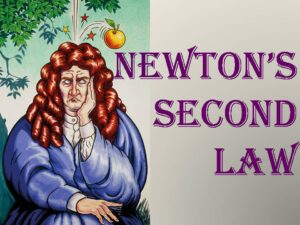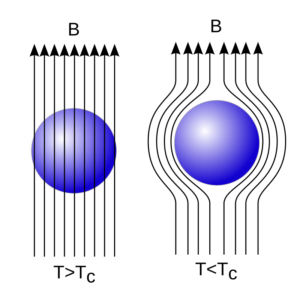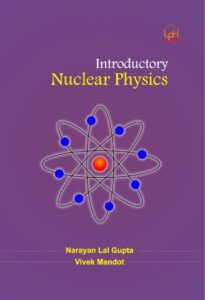Newton’s second law
- According to this law the rate of change of momentum is directly proportional to the applied force, and the change in momentum is always takes place in the direction of applied force.
- F ∝ (dp / dt) ⇒ F = k (dp / dt)
- Here F is applied force, p is linear momentum and k is constant of proportionality.
- In S.I. k = 1
- ∴ F = dp / dt
- ∵ p = mv
- ∴ F = d(mv) / dt ⇒ F = m (dv / dt) ⇒ F = ma (∵ a = dv / dt)
- Thus Newton’s second law gives the quantitative definition of force.
- If ax, ay and az are the components of acceleration in x, y and z directions respectively, then
- F = m (ax i + ay j + az k) = (max) i + (may) j + (maz) k
- F = Fx i + Fy j + Fz k
- Since Newton’s first and third laws can be derived from second law, and hence this law is the real law of motion or the most fundamental law of motion.
- ∵ a = F / m
- ∴ Acceleration ∝ 1 / Mass
- It means greater is the mass of the body, smaller is the acceleration produced by it.
- Since mass is the measure of inertia of the body, therefore the mass given by above equation is known as inertial mass.
- Acceleration produced in the body depends only on its mass, not on the initial or final velocity.
Unit of force
- Unit of force = Unit of mass × Unit of acceleration
= kg × m/s2 = N (newton)
- CGS unit of force is dyne
- 1 N = 105 dyne
Dimensional formula
- Dimension formula of force is [MLT-2]
Accelerated motion
- If in a motion, only the magnitude of velocity of the body changes, then in this type of motion the force is applied either along the direction of motion or opposite to the direction of motion.
- If only the direction of the motion of the body changes, then in this type of motion the force is always applied at right angles to the direction of motion of the body. Circular motion is the example of this type of motion.
To know in detail about Newton’s second law of motion please click here.



